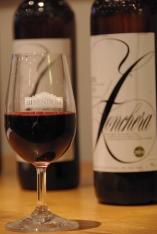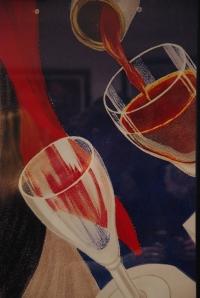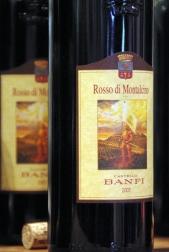 A wine tasting session is always an interesting experience. For a few hours, you are invited (thanks to Bibendum Wine) to live in a world of vines and grapes, where some of the most complex alchemies in the food and drink industry are explained, and where the wonders of the whites, reds and rosés reveal their most fascinating secrets.
A wine tasting session is always an interesting experience. For a few hours, you are invited (thanks to Bibendum Wine) to live in a world of vines and grapes, where some of the most complex alchemies in the food and drink industry are explained, and where the wonders of the whites, reds and rosés reveal their most fascinating secrets.
The great thing about wine tasting is how easy it is for a wine expert to explain how the industry works. More than twenty years of ignorance will suddenly evaporate in five minutes thanks to a piece of paper, a pen, a rough sense of drawing … and a glass of wine.
To achieve incredible variety in colours, tastes and smells, winemaking requires years of maturing and cultivation to create the right grape, followed by endless hours of experimentation to find the unique combination, which will give a wine its taste.
Among all the wines made across the globe, Italian wines have developed out of a perfect symbiosis: The combination of food and wine enjoyed in true Italian fashion means that restaurants usually serve 3 bottles of wine for every 10 plates of pasta. The marketing experts among you will all agree: if you want to sell wine in Italy, sell pasta or befriend a restaurant owner!
In the 60’s, Italy decided to apply the same scheme France had developed to market their wine:

At the bottom of the pyramid, the ‘Vina da Tavola’, which is the basic table wine.
Next is the ‘Indicazione Geografica Tipica’, a certification that the wine possesses certain qualities due to its geographical origin and specifies the grapes’ origins.
This is followed by the widely recognised ‘Denominazione di Origine Controllata’ which has been the highest level for many years. DOC products should be produced in a consistent and traditional manner with ingredients from specifically classified producers in designated geographical areas. The products must further be aged at least partially in the respective designated area.
In their magnitude, Italy added another level ‘Denominazione di Origine Controllata et Garantita’ which is at the top of the Italian wine ranking system. Not only does the wine meet the DOC requirements, it is also subject to more stringent controls in the areas of cultivation and processing. Wine is awarded this certification only after a specially appointed commission performs a taste test and passes intricate chemical testing.
Ceretto Barolo Zonchera 2004
First stop is the North East of Italy, in the province of Barolo, to taste the wines of Langhe by the Ceretto family.
The Ceretto Barolo Zonchera evolves a bit like Burgundy, where depending on the year and the weather, you get a great vintage or a harder taste. Soft and round, the alcohol and the acidity are well-balanced. This wine has been receiving an ever-increasing number of requests from around the world and works well with red meats or richly-cooked game.
Ceretto Langhe Arneis Blange 2007
White wine is the most popular wine in Italy as demonstrated by Milan, named the City to drink, where people used to drink three times more white wine than red.
Rediscovered recently, Ceretto Langhe Arneis Blange is the white wine that shocked the industry by being the first made using a fully-computerized fermentation system over the traditional methods.
With the use of new cold processing techniques in steel tanks, Ceretto Langhe Arneis Blange is a fruity wine with hints of pears and apples. A very refreshing white to serve with fish appetizers, the wine is lightly fizzy due to its low sulphur content.
Castello Banfi Brunello Di Montalcino 2004

Further in the South, the Castello Banfi, a family-owned vineyard estate and winery from the Brunello region of Tuscany, invites you to taste some delicate refined red wines that, produces.
Brunello di Montalcino was Italy’s first wine to be accorded D.O.C.G. status. The wine is made of the best grapes of the Montalcino region in Tuscany. The wine ages for 2 years in barrels and an additional year in bottles before distribution.
A well-loved wine that can age for years and still be flush, the Castello Banfi Brunello Di Montalcino 2004. Is best served with red meat, savoury game and aged cheeses.
Castello Banfi Brunello Di Montalcino Poggio Alle Mura 2004
The wine is called “Poggio alle Mura” to honor the historical name of the medieval fortress crowning the vineyard estate. It is the result of over two decades of research in clonal selection and cultivating the optimal grape. The Castello Banfi Brunello Di Montalcino Poggio Alle Mura 2004 is a fruity wine with a lot of character. To be served with red meats, roasts, hearty stews and rich powerful cheeses.
